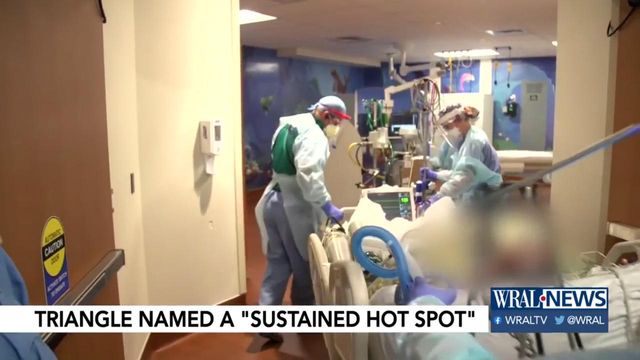Federal data shows Triangle counties 'sustained hotspots' for coronavirus
Newly released data from the White House indicates 87 of North Carolina's counties, including Durham, Orange and Wake counties, are "sustained hotspots" for COVID-19.
Posted — UpdatedNewly released data from the White House indicates 87 of North Carolina’s counties, including Durham, Orange and Wake counties, are “sustained hotspots” for COVID-19.
The federal government predicts coronavirus cases will continue to increase in these places, leaving health experts worried about the strain on area hospitals.
"We don't want to expend the resources we have," said Dr. David Wohl, an infectious disease specialist at UNC Health.
"Remember, we're taking care of people without COVID, and on top of that, have to deal with COVID-19. So, it really does stretch, especially some of these smaller hospitals," he said.
Sustained hotspots are defined as communities with a high sustained case burden. Right now, Wake and Durham counties are both seeing substantial community spread, while Orange is seeing significant spread in North Carolina's COVID-19 County Alert system.
"I'd like to think it's because we've been effectively getting the message out to folks and they're adhering to the ‘three W’s,’" said Todd McGee, Orange County's community relations director, referring to guidance to wear masks, wait apart from others and wash hands.
Health officials continue to hammer the message of not letting down one’s guard.
"Keep the numbers in your head. There's a lot of virus right now," said Wohl.
"Stay home, and wear a mask if you do go out," said McGee.
Officials with the White House hope releasing this report inspires Americans to make personal choices to slow the spread of the virus.
"Previously, we had not seen this data. So, this data becoming more transparent is important because then people can make some decisions and then our policymakers can get the information they need," said Wohl.
Related Topics
• Credits
Copyright 2024 by Capitol Broadcasting Company. All rights reserved. This material may not be published, broadcast, rewritten or redistributed.






